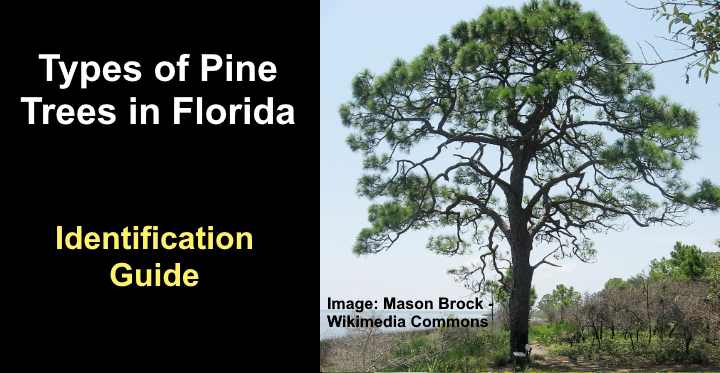Florida is home to various pine species that are uniquely adapted to the state’s climate. Pine trees are known for their evergreen needle-like foliage and tolerance to cold temperatures. Despite this, several pine species thrive in Florida, including longleaf and shortleaf pines, loblolly pines, and spruce pines.
Florida pine trees are adapted to the state’s heat, humidity, and coastal sea air. The slash pine is a common species found throughout the state, from the Panhandle to the Florida Keys. Other species like loblolly pine, pond pine, and shortleaf pine prefer cooler temperatures and are found in the northern part of the state.
There are seven native and two non-native varieties of pine trees found in Florida. If you’re interested in learning about the different pine species prevalent in the southern United States, this guide will identify and describe them for you.
Florida Pine Tree Facts

Florida boasts a rich diversity of pine trees, with 126 species belonging to the Pinus genus and the Pinaceae family. Among them, seven are native to Florida. These trees are characterized by their needle-like leaves, brown cones, and reddish-grey bark that peels in plates. In Florida, pine trees require well-drained acidic soil and full sun for optimal growth, similar to other Pinus species. They have a medium to fast growth rate, an open rounded shape, and a crown that extends at least halfway up the trunk. The Florida pines subgenus includes species such as yellow or diploxylon pine trees. Slash pine (Pinus elliottii) thrives in USDA zones 11 and 12, while Florida pine trees do best in USDA zones 7 to 10. Pine trees add beauty to landscapes with their evergreen foliage that ranges from light to dark green throughout the year. Fast-growing Florida pines are also highly valued in the commercial timber industry.
Florida Pine Tree Needles
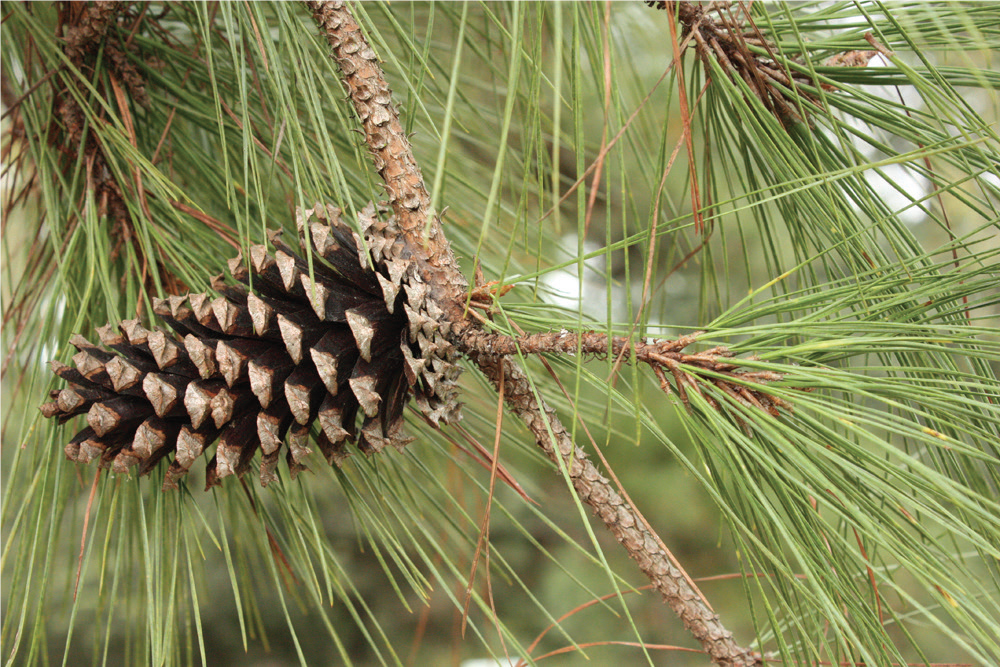
Pine trees are recognized by their slender needle-like leaves that grow on reddish woody twigs and are usually grouped in pairs or threes. In Florida, pine tree needles vary in length from 2 to 18 inches (5 to 45 cm) and can be dark-green, blue-green, or silvery-green in color.
The longest needles are found on the longleaf pine (Pinus palustris), while the shortest needles are found on the sand pine (Pinus clausa). When crushed, pine needles release a distinctive pine fragrance due to the presence of resin caches. The number of needles in a bundle is another way to identify Florida pines. Sand, shortleaf, and spruce pine trees have needles in pairs, indicated by the letter “S,” while slash pine (beginning with “SL”) has needle bundles in twos and threes, and Florida pines have needle bundles in threes, beginning with the letter “L.”
Florida Pine Tree Cones
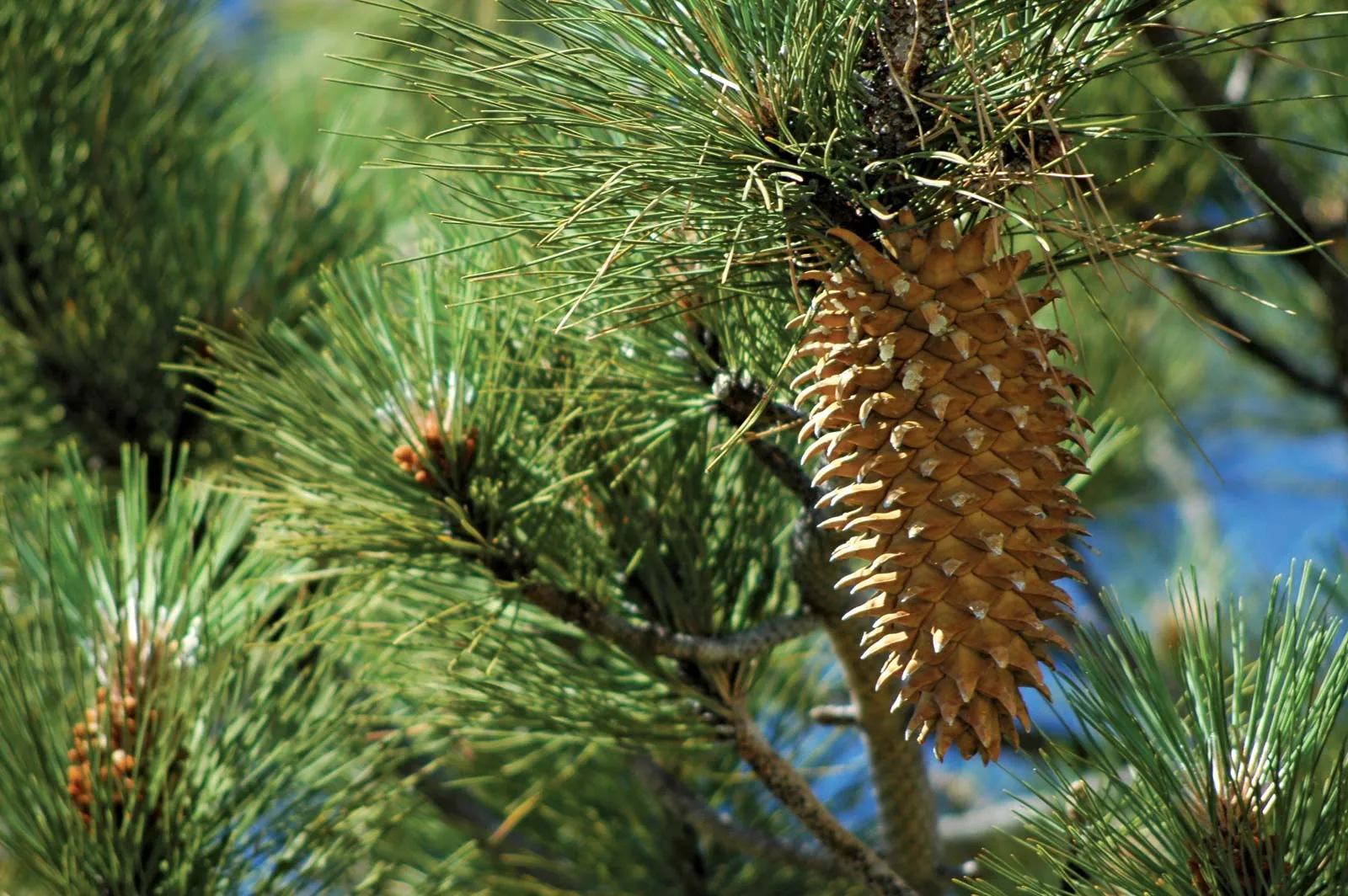
Florida pine trees have a distinct bark that is usually thick and scaly. The outer bark is grayish in color and peels away to reveal a reddish-brown bark underneath. As the tree ages, the reddish bark thickens and forms flaky plates that are uneven.
The branches of Florida pine trees are arranged in whorls around the trunk. It can be difficult to differentiate between different Florida pine species based on their bark alone, as the color and texture of the bark varies between species. Other factors, such as needle size, cone shape, and tree height, can also help in identifying different types of Florida pine trees.
Florida Pine Tree Bark
Florida pine trees are known for their distinctive bark, which is thick, scaly, and typically grayish in color. As the tree ages, the outer bark peels away to reveal a brownish-red inner bark that thickens and forms uneven, flaky plates. The branches of pine trees are arranged in whorls around the trunk, and each species of pine tree has its own unique bark color and texture, making it difficult to distinguish between them based solely on their bark.
How to Identify Florida Pine Trees

Florida pine trees can be distinguished by their needle-like leaves, which are typically green to blue-green in color. These needles usually grow in pairs or threes and are accompanied by seed-bearing cones that have a pointed shape. In terms of bark, Florida pine trees usually have gray, reddish-brown, or grey bark, which is thick and scaly. The height of the tree is also an important factor when identifying Florida pines.
Types of Pine Trees in Florida (With Pictures) – Identification Guide
The different pine varieties that grow in Florida are listed below.
Longleaf Pine (Pinus palustris)
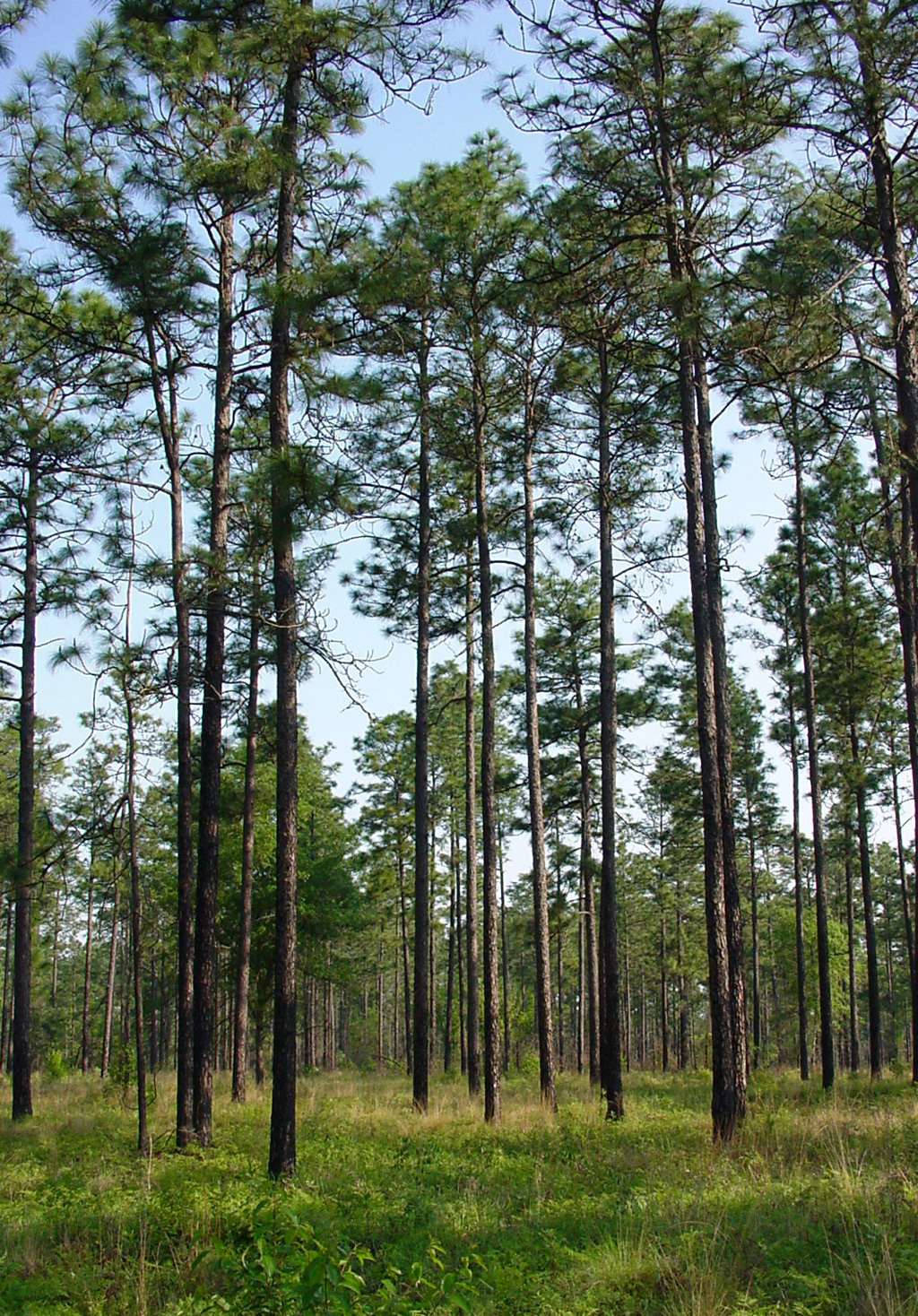
The longleaf pine is a tall, stately evergreen conifer that grows in Florida. It has long needles and trunks. The pine tree’s straight stem and short branches create an uneven crown that distinguishes it from other trees. In clusters of three, the long thin green needles develop. Longleaf pine cones are triangular in shape and are unusually big.

The longleaf pine is a species of pine tree that thrives in acidic, well-drained soil and is typically found in USDA zones 7 to 10. This massive tree grows throughout north Florida, along the Gulf coast, and as far south as Lake Okeechobee. Longleaf pine trees can reach heights of up to 120 feet (36 meters), making them the largest native southern pine species. They are recognized by their long needles and immature cones.

The thick, orange-brown plates that develop as the tree grows are another identifying feature of mature longleaf pine cones.
Florida pine tree needles: Longleaf pine needles have finely serrated edges and range in length from 8 inches to 18 inches (20–45 cm). The thick trio of silvery-green needles droops long and hangs down.
Florida pine tree cones: The largest of all the native Florida pine trees,Longleaf pine cones are reddish-brown and vary in length from 6″ to 10″ (15 – 25 cm).
Shortleaf Pine (Pinus echinata)

Shortleaf pine is a tall tree that is native to the southeastern United States. Its needles are shorter and cones are smaller compared to the longleaf pine. The needles usually grow in clusters of twos or threes and are blueish-green, measuring around 3 to 5 inches (7.5 – 12 cm) in length. The tree’s identifying characteristics also include small woody cones with pointed tips and reddish-brown plates covering the tall trunk.

In USDA zones 6 through 9, shortleaf pine needles, male cones, and female cones may be found. The shortleaf pine tree thrives in full sun and sandy or loamy soil, as do other pines. The coniferous Florida tree, which thrives in the Panhandle region of the state, is best grown north of the state. Between 65 and 100 feet (20 and 30 meters) tall, shortleaf pine trees Since the pine tree and the Spruce pine share a native environment, identification is difficult. The shortleaf pine, on the other hand, has smaller cones than the spruce pine.
Florida pine tree needles: Shortleaf pine trees have slender blue-green needles that grow in clusters of two..
Florida pine tree cones: The small size of shortleaf pine cones, which ranges from 1.5 to 2.5 inches (4 to 6 cm) long, distinguishes them. When the pine cone scales are open, they’re flexible.
Loblolly Pine (Pinus taeda)

Loblolly pine trees are a common sight in the southeastern United States and are characterized by their pyramidal to oval crown, flaky bark, and long 8-inch (20 cm) needles. These pines have sharply pointed conical cones and produce purple or yellow blooms. In Florida, loblolly pines are among the fastest-growing conifers and thrive in USDA zones 6 to 9, performing well in the northern parts of the state. These trees can grow up to 90 to 100 feet (30 meters) tall.

Florida pine tree needles: The yellowish-green needles on the loblolly pine, which grow 6″ to 10″ (15–25 cm), identify it.
Florida pine tree cones: The conical form and size of loblolly pine cones (2.5–4 in. or 6–10 cm) are distinguishable characteristics. Sharp pricks cover the pine seed cones.
Slash Pine (Pinus elliottii)

Slash pine trees are native to the southeastern United States and have long needles. The egg-shaped crown, 5″ to 11″ (13 – 28 cm) long needle leaves, and ovoid seed cones distinguish the Florida pine from other pine species.
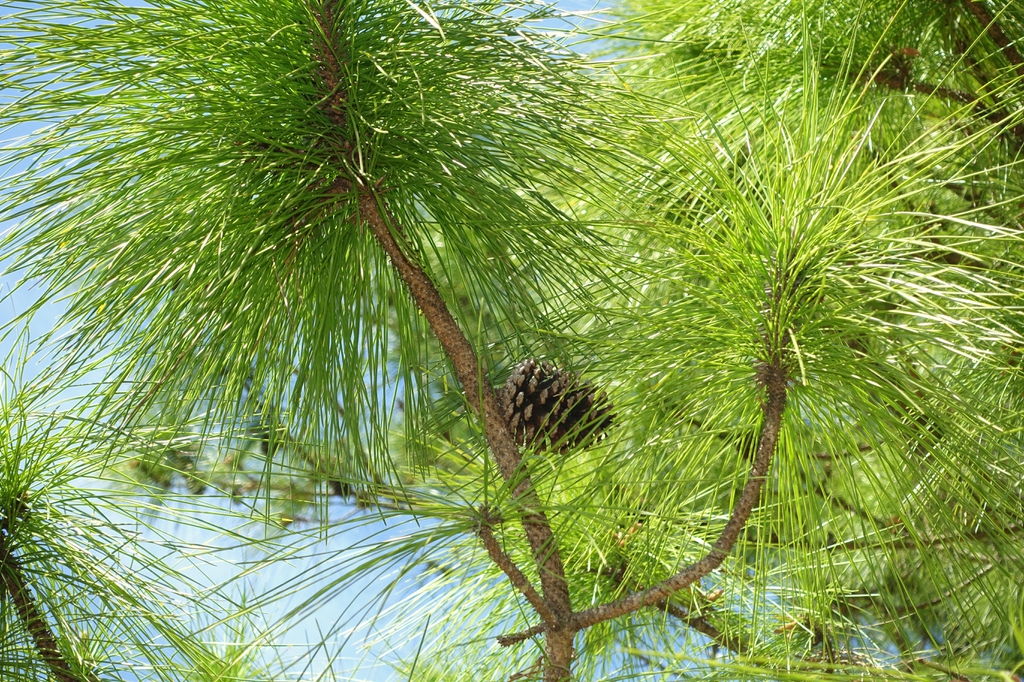
From Jacksonville and Tallahassee in the north to Miami and Key West in the south, slash pine needles are found in Florida. In USDA zones 8 through 11, slash pines may be grown. Southern Florida pines are another name for them. The pine tree may grow to be 60 or 100 feet (18 or 30 meters) tall.
Florida pine tree needles: The dark blue-green color and lengthy length of Slash pine needles distinguish them.
Florida pine tree cones: Slash pine tree cones are 3 to 6 inches (7.5 to 15 cm) long, with a glossy brown sheen and tiny pricks on the scales.
Pond Pine (Pinus serotina)
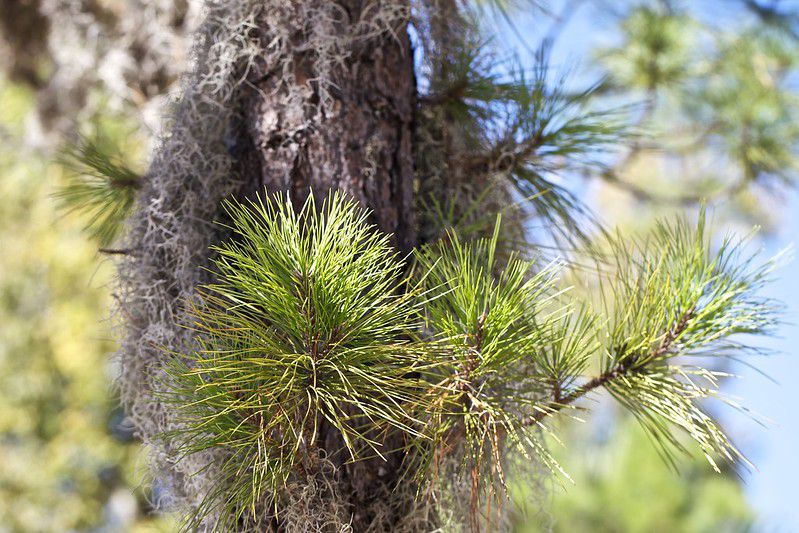
Pond pine trees have yellowish-green needles bundled in three groups and are endemic to Florida. They thrive on poorly drained soil. The pine tree has yellow-brown spherical cones with flat scales and a spreading, spherical growth. The cones of pond pine trees normally open only after a fire, and they grow well in poorly-drained soil and woodlands.

Planting pond pine trees in full sun and sandy or loamy soil thrives in USDA zones 7 through 9. In north Florida and south to Lake Placid, the hardy pine tree performs best in ideal conditions. Pond pines may reach 70 feet (21 meters) in height.
Florida pine tree needles: Pond pine tree needles are typically 5″ to 6.5″ (12-16 cm) long and occur in groups of three.
Florida pine tree cones: Little, yellowish-brown spherical cones with sharp scales make up Pond pine cones.
Sand Pine (Pinus Clausa)

The sand pine is a little to medium-sized conifer found in the Atlantic and Gulf coastal regions of Florida. A conical, spreading crown and a distinctive twisted branching development habit characterize the small to medium-sized pine tree. The green needles of the pine tree are 2″ to 3″ (5 – 7.5 cm) long and have pale brown cones.

In USDA zones 9 and 10, short-lived sand pine trees flourish on poor sandy soils and flourish. The 16 to 33 ft. (5 to 10 m) tall heat-loving shrub-like conifer tree is a popular choice.
Florida pine tree needles: The twisted, finely serrated margins of sand pine tree needles distinguish them from other needles.
Florida pine tree cones: Sand pine cones are 3″ (7.5 cm) long cylindrical tan-colored or reddish-brown woody cones that grow in clusters.
Spruce Pine (Pinus glabra)

The spruce pine is a coniferous evergreen pine tree with silvery-gray needles that are spirally twisted. It is native to Florida. The Florida pine tree’s rounded to oval crown develops as it matures. The graceful pine may grow to be 80 to 115 feet (25 to 35 meters) tall and broad.
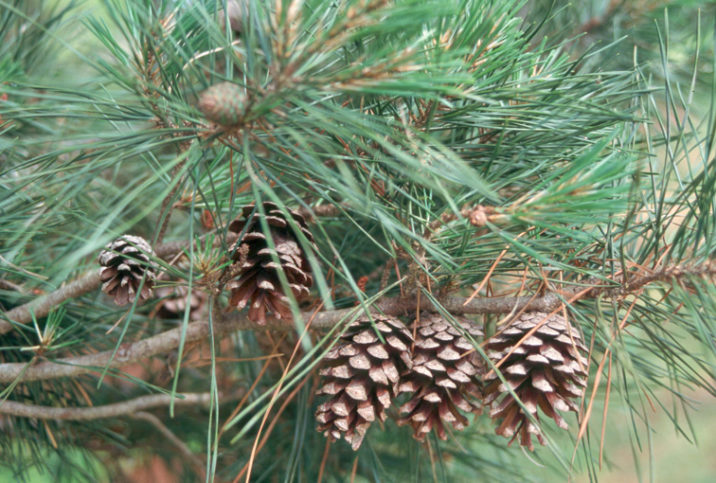
The spruce pine grows in sunny areas, thriving on sandy loamy soils, and has needle-like needles and a cone. Furthermore, this pine tree is one of the most tolerant of shade in the state of Florida.
Florida pine tree needles: As the tree ages, spruce pine needles turn grayish-silver in color. Needles are grouped in pairs and range in length from 3.5 to 4 inches (9 to 10 cm).
Florida pine tree cones: The slender, cylindrical spruce pine cones are just 1.5″ to 3″ (4 to 8 cm) in length and are extremely tiny.
Virginia Pine (Pinus virginiana)
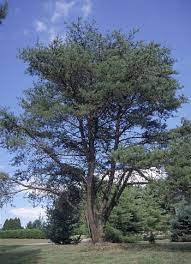
Virginia pine trees thrive in northern Florida, despite the fact that they are not natural to the state. The irregular crown of this small pine tree grows 15 to 40 feet (4.5 to 12 meters). The yellowish-green color of the short pine needles grows in pairs.
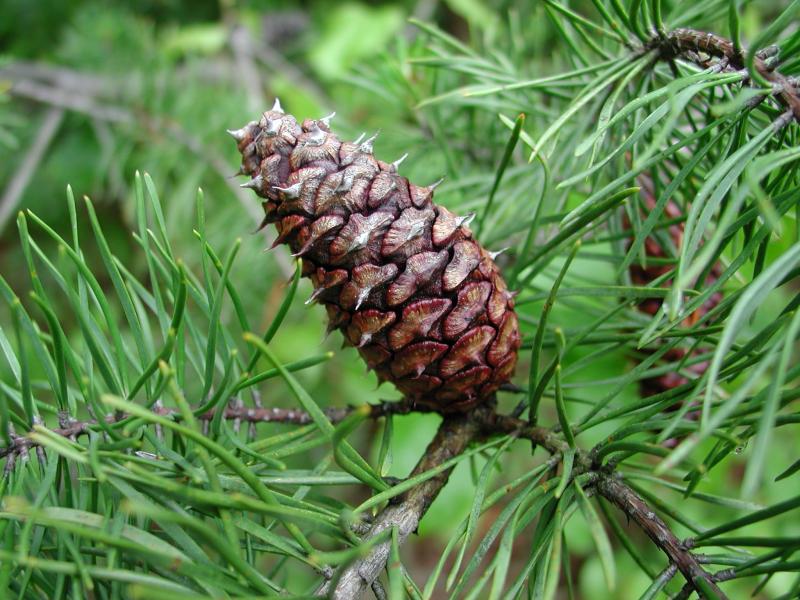
Shaggy, reddish-brown to orange bark and tiny, spiny-scaled cones are among the identifying characteristics of Virginia pine cones and needles. The needles and spiky cones of the pine tree may grow up to 8 inches (4 cm). USDA zones 4 through 9 in full sun are inappropriate for the cold-hardy conifer.
Japanese Black Pine (Pinus thunbergii)

The Japanese black pine is native to Japan and the far east, but it thrives in Florida. The horizontally-spreading branches of the tall ornamental pine make it look like a shrub. In USDA zones 6 through 8, Japanese black pines in Florida may grow to be 130 feet (40 meters) tall.

Non-native Japanese black pines are distinguished by their long, bright green needles, which may range from 3 to 4.5 inches (8 to 11 cm) in length. Their conical cones are 1.5″ (4 cm) in length and have a cone shape. The Japanese black pine needles are thicker and sharper than those found in native Florida conifers. The Panhandle is the greatest location in Florida for growing Japanese black pines.
